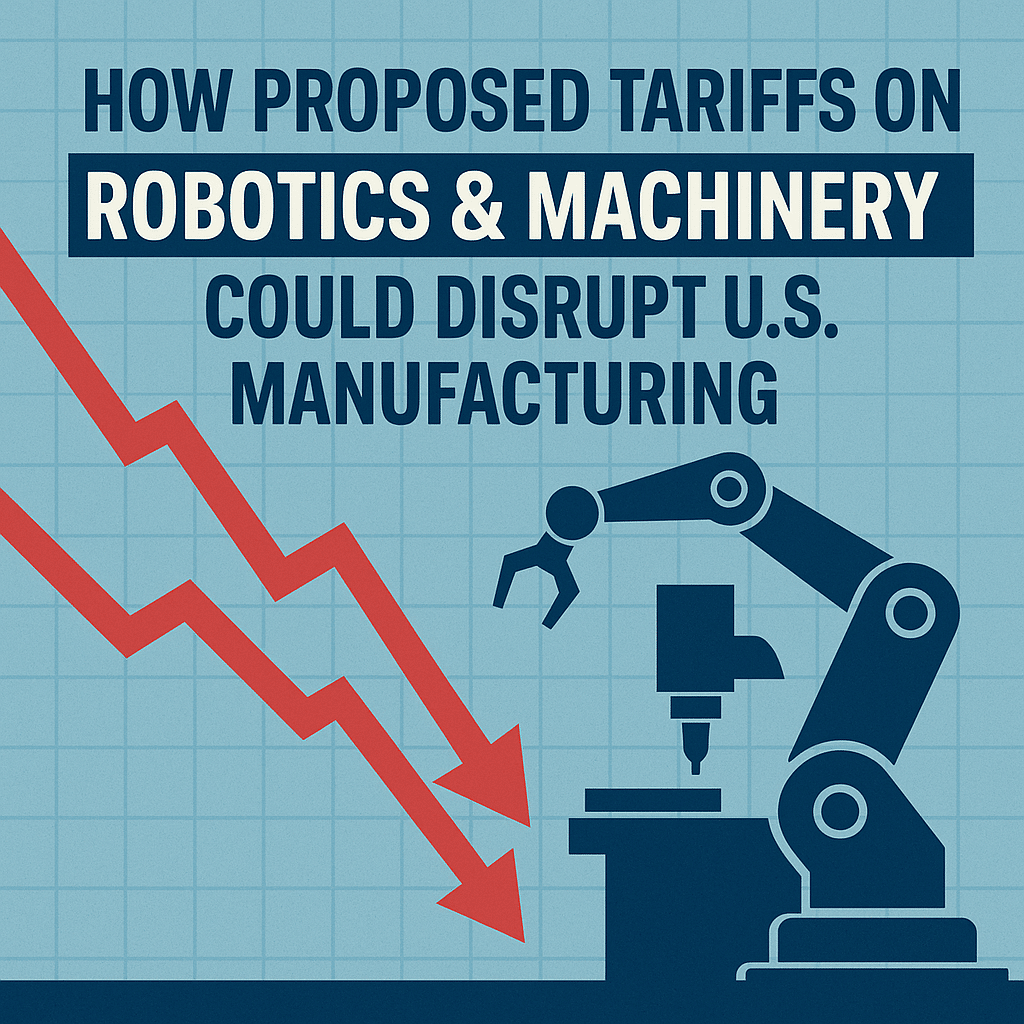Why Industrial Machinery Tariffs Have Manufacturers on Edge
The U.S. Commerce Department is considering industrial machinery tariffs under a new Section 232 investigation, aiming to determine whether imports of robotics and advanced machinery pose a national security risk. But for manufacturers across the country, the real risk may lie in the economic ripple effects if new tariffs are imposed.
The investigation, launched on September 2, covers everything from CNC machines and robotics to laser cutters and automated tooling — key assets in modern manufacturing environments. While drones are excluded, the scope is wide enough to touch nearly every sector that relies on precision machinery and automation.
Section 232: A Trade Policy Tool with Broad Reach
Section 232 gives the federal government authority to restrict imports that could threaten national security. While it’s been used in the past for materials like steel and aluminum, its application is expanding — with recent investigations targeting semiconductors, medical equipment, and now, industrial machinery.
If the government concludes that imported equipment is a vulnerability, it could impose sweeping industrial machinery tariffs — potentially raising costs for manufacturers, suppliers, and equipment integrators across the U.S.
Manufacturing Groups Warn of Negative Impact
Two major trade groups — the National Association of Manufacturers (NAM) and the Plastics Industry Association (PIA) — have voiced strong opposition to the proposed tariffs. They argue that many types of industrial machinery can’t yet be produced domestically at the scale needed, making some level of imports unavoidable.
According to NAM, about 16% of the essential machinery required to build and modernize U.S. factories must still come from abroad. Imposing tariffs on that 16% could increase costs, reduce productivity, and slow progress on factory upgrades.
PIA also emphasized the potential impact on industries that depend on automation — including packaging, semiconductors, automotive, and aerospace. Tariffs could lead to longer lead times, higher costs, and fewer capital projects.
Capital Investment and Reshoring at Risk
As U.S. manufacturers work to reshore operations and automate more aggressively, access to affordable machinery is crucial. Higher equipment costs caused by industrial machinery tariffs could discourage the kind of capital investments needed to stay globally competitive.
Smaller firms may delay upgrades, while OEMs and Tier 1 suppliers could see disruptions in planned capacity expansions. Any drag on equipment availability or pricing would also strain an already complex supply chain.
Public Comments Open Through October 17
The Commerce Department is accepting public comments on the investigation until October 17. This is a critical window for manufacturers, suppliers, and industry advocates to voice their concerns about the potential fallout from new industrial machinery tariffs.
Implications for Spring Manufacturers and Precision Parts Suppliers
Even companies not directly importing machinery could feel the effects. Spring manufacturers, CNC shops, and tooling suppliers rely heavily on high-tech equipment to meet tight tolerances and lead times. If key machinery becomes harder to source or more expensive, it could affect everything from production schedules to customer pricing.
What to Do Now: Prepare for Possible Changes
As the investigation progresses, manufacturers should:
- Track updates from the Department of Commerce
- Submit public comments if affected
- Reevaluate 2025 capital investment plans
- Assess supply chain exposure to foreign machinery
- Prepare for possible price increases or lead time shifts
Conclusion: Industrial Machinery Tariffs Could Reshape the Sector
Industrial machinery tariffs could have wide-reaching effects — not just on large OEMs, but across the entire supply chain. For U.S. manufacturers focused on growth, reshoring, and automation, these proposed policies introduce uncertainty at a time when stability is needed most. Staying engaged in the policy conversation is essential to protecting your operations and investments.

